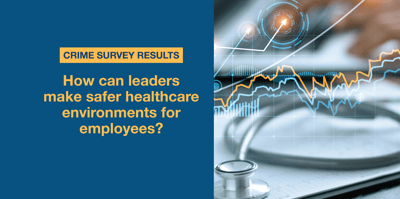Blog
4 Steps to Using Effective Training as an Incident Prevention Tool
Everybody knows the sayings, "if you see something, say something" and "stop, drop, and roll." These phrases, and others like them, are intended to increase physical safety awareness in the community—and awareness is the first step to prevention.
No matter the industry or organizational structure, fostering this level of awareness requires frequent and impactful security and safety awareness training sessions. Taking a proactive approach to training creates a community where people take responsibility for their own safety, as well as the safety of their peers. Ultimately, this increases early intervention and decreases the likelihood of incidents.
From a security perspective, there is not a single situation where training doesn't make sense. So how do risk and compliance managers ensure effective training delivery?
4 Steps to Effectively Using Physical Security Awareness Training as an Incident Prevention Tool
1. Define training goals
To conduct engaging, impactful training sessions, first establish learning objectives. Compliance managers must ask themselves: what am I trying to accomplish? Of course, the high-level answer to that question is increased safety—but training goals should go beyond that.
How do you want to shape the behavior of your trainees? What do you want them to do? What don't you want them to do? Articulating these goals allows you to shape the style and trajectory of training sessions more effectively.
2. Understand the audience
Decipher the learning styles, personalities, and generational differences of your audience. Learning styles, such as visual, auditory, and experiential, vary from person to person, and they can impact how well trainees absorb information. Likewise, generational differences determine the way trainees consume content and what kind of training will be most effective. While a Baby Boomer and a Millennial can have the same learning style, they may not consume or remember content in the same way.
Consider the audience and ask questions such as: Will the talking head be more effective than flash motion? What about vignettes and role playing? Which scenarios will be most engaging to my audience? Is online public safety training the best option?
3. Train frequently to reinforce messaging
Historically, physical security awareness training has been conducted via acute learning: trainees sit in on a two-hour training class once a year and are inundated with tons of information. However, these longer, infrequent training sessions are difficult to digest, so trainees are likely to forget most of what they're learning.
On the other hand, micro-learning has been shown to double engagement and retention rates. By implementing frequent, high-touch training sessions over a longer period of time, the information is more likely to be retained.
4. Measure performance
Conduct a quantitative and qualitative analysis before, during, and after training to evaluate its impact. If the training sessions are centered around bystander intervention policy and reporting, provide trainees with an anonymous reporting tool. After training, ask them if they know where and how to report incidents, and compare the number of reports made prior to and after training.
This information will indicate whether or not the training was successful. If trainees still don't know how to use the reporting tool or the number of reports decreases, then you may need to revisit steps 1–3.
Prevention Requires People, Process, and Technology
Although tragic incidents are more likely to be featured in the news, there are countless situations where incidents were prevented due to effective training programs and awareness—ultimately, these situations should be the norm. Make training a priority and celebrate the situations in which incidents were prevented or de-escalated as a result.
The bottom line is: when conducted effectively, training is the most effective incident prevention tool. Train early, train often, and train in an interesting and engaging manner to increase physical safety awareness—and empower your community with the reporting tools that enable them to act on their training.
More from the blog
View All Posts
How to Improve School Security and Safety: The 5 Step Approach
Read More
How can leaders make safer healthcare environments for employees?
Read More
How to Prepare for an Armed Intruder: Training for Schools
Read MoreSubscribe to email updates
Stay up-to-date on what's happening at this blog and get additional content about the benefits of subscribing.
